Differences in palette
Artists' Materials
The Presentation in the Temple and St Clement are characterised by the use of azurite and indigo in addition to ultramarine in the border decorations, and by small amounts of ultramarine added to white areas, providing a cooler hue.
These same two initials, as well as the St Laurence, also contain a dark red earth pigment which was used to outline the glittering bronze-coloured decorations painted in mosaic gold. All three are characterised by the use of a yellow lead oxide, which was also mixed with azurite to provide green hues.
The yellow initial D surrounding St Clement, however, was painted with lead-tin yellow. This pigment characterises the palette of Christ the Redeemer where it also appears mixed with azurite in green areas.
The image of Christ is unique also for the presence of a purple hue, obtained with an insect-based dye, as well as for the use of umber in the darkest portions of Christ’s flesh tones and of yellow ochre to provide highlights in his hair.
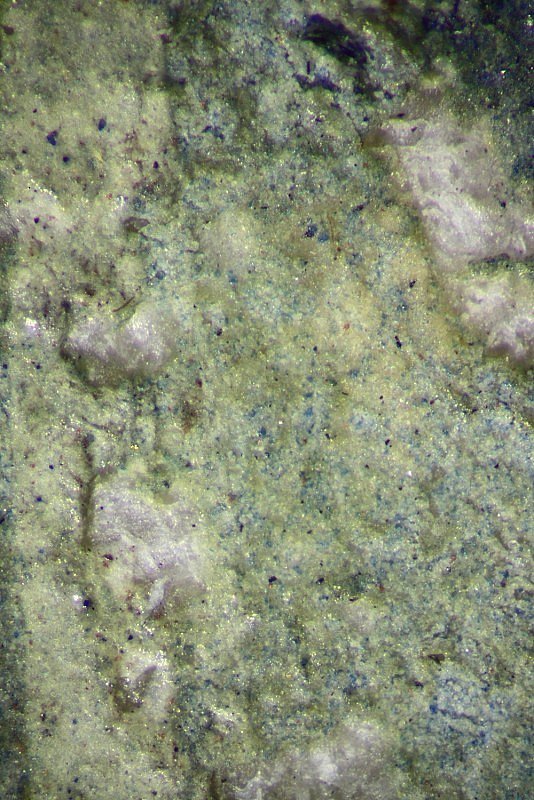
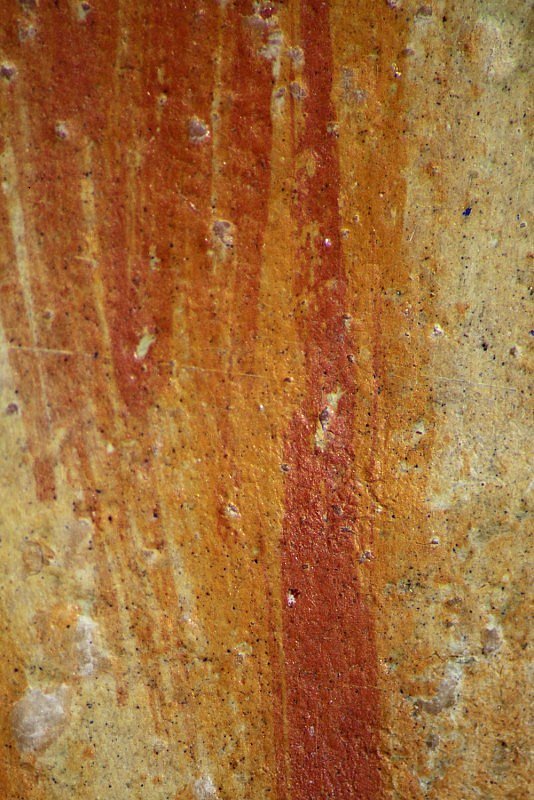
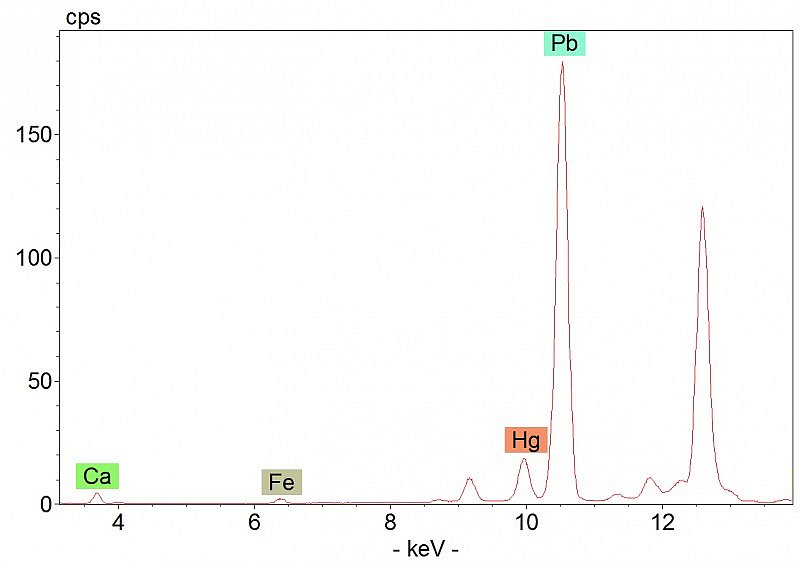
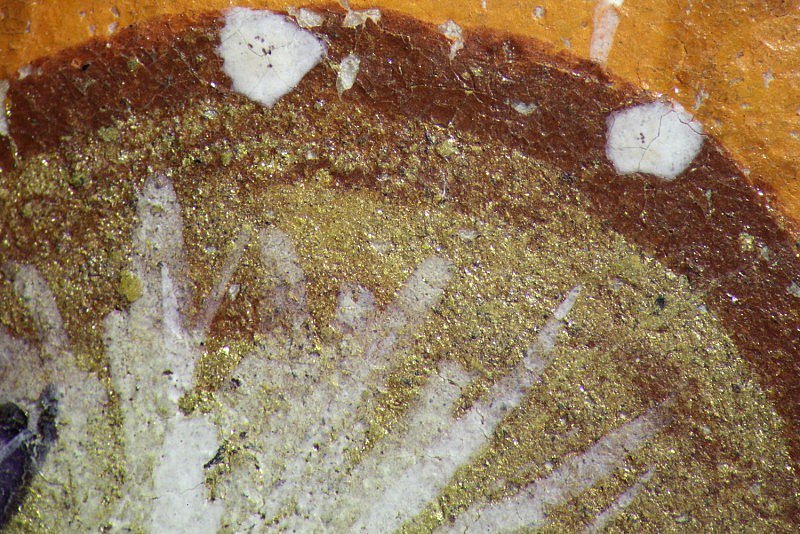
Detail of
the mosaic gold leaf, outlined with a dark red earth pigment, under
magnification (16x). Its shiny aspect and the characteristic peak at 308 cm-1
in the Raman spectrum (below) confirm the presence of mosaic gold.
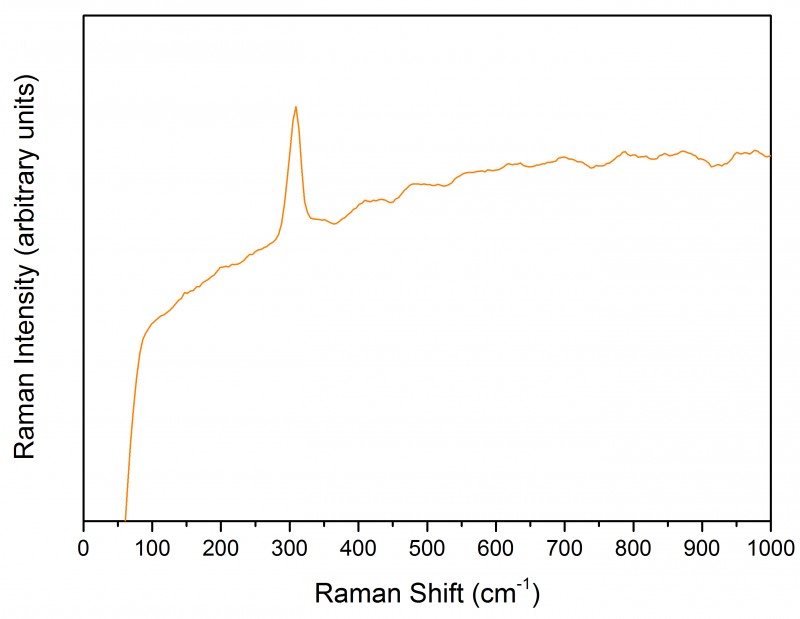
St Laurence
Historiated initial L from an Antiphoner, 1390s
The initial L belonged to the office of Matins for the feast of St Laurence (10 August) in Corale 19, an Antiphoner made in the 1390s. St Laurence is shown with a book, a martyr’s palm branch and his distinctive attribute, the gridiron on which he was tortured. The image has been attributed to various artists: Don Silvestro dei Gherarducci; his collaborator known as the Maestro delle Canzoni; or the Florentine painter and illuminator Mariotto di Nardo.
It is also possible that the figure of St Laurence and the decorated initial were painted by two different artists; despite general similarities, some differences exist between the pigments used in these two areas. Green hues, for example, were all obtained using a mixture of azurite with a yellow pigment. The palm leaf held by the Saint, however, seems to contain ultramarine as well (hotspot 1). The XRF data also suggest the presence of gypsum in most of the border areas analysed, but not in the figure of the Saint.
Related content: Initials from Choir Books
- Artists: The Artists associated with the initial of St Laurence
- Texts and Images: St Laurence
- Description and Contents: Physical Description
- Description and Contents: Script and Textual Contents
- Artists' Materials: Differences in palette
- Artists' Materials: Selective use of egg yolk binder
- Artists' Techniques: Gold tooling
- Artists' Techniques: Painting the flesh
